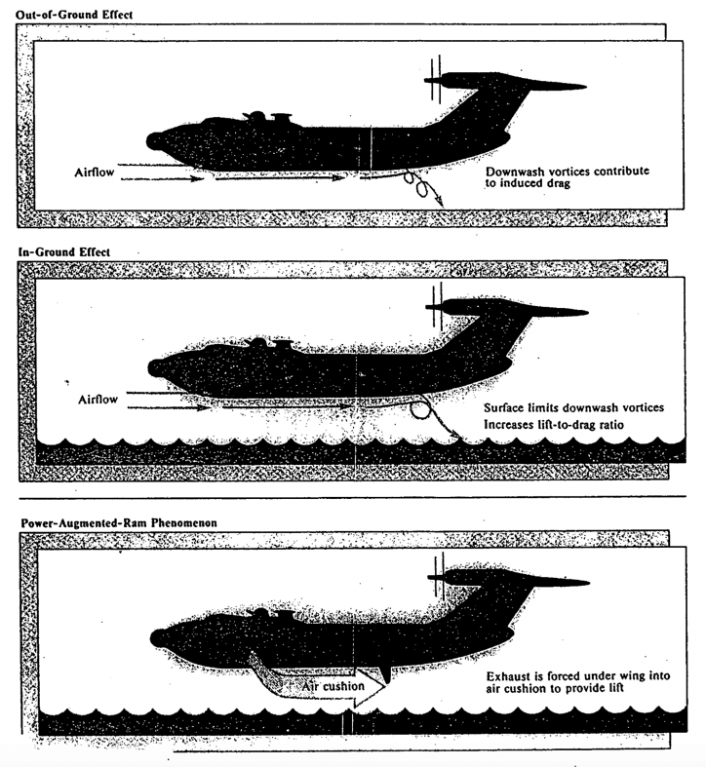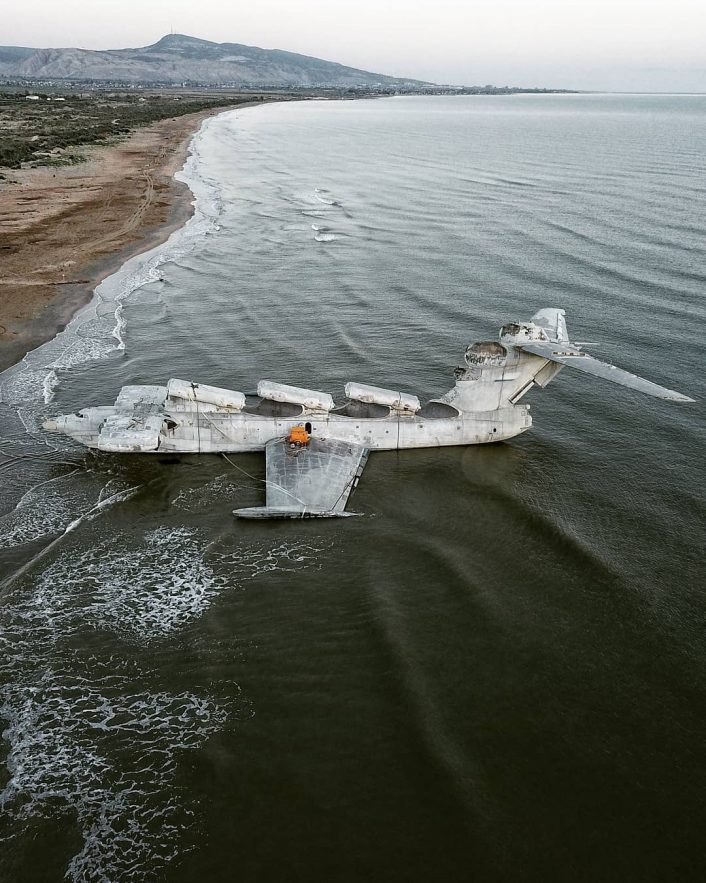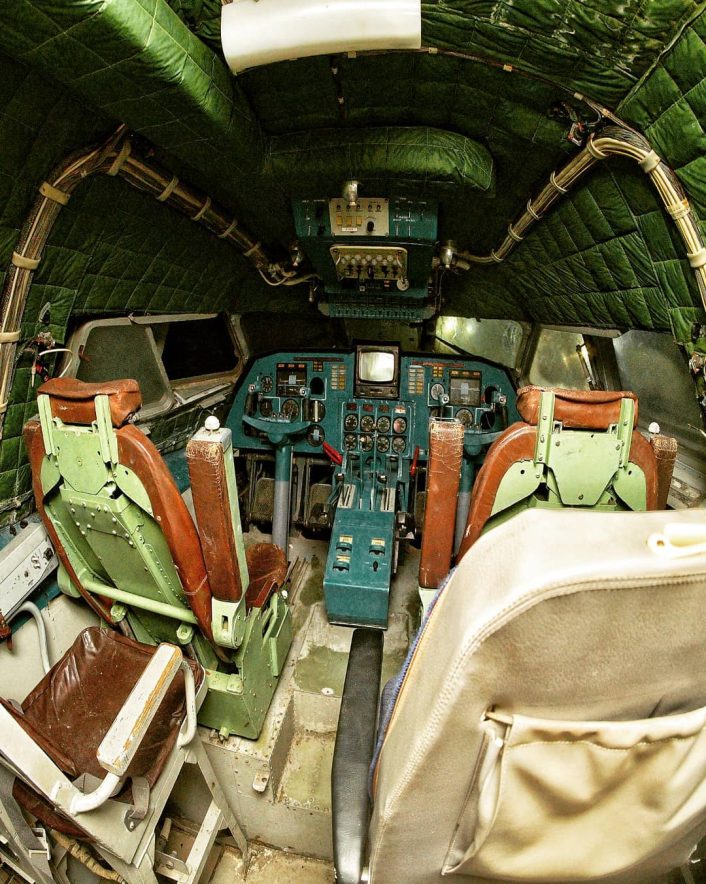Some new interesting (internal and external) images have emerged of the only Project 903 Attack/Transport ground effect vehicle (Ekranoplan) with carrier-killing supersonic missiles that has recentlty made its final voyage before becoming museum.
On Jul. 31, 2020, Russia’s only completed MD-160 Lun class ekranoplan, towed by a tug, made its final voyage across the Caspian Sea. The trip, taking 14 hours in total, was required to move the gigantic non-operational ground effect vehicle (GEV) designed by Rostislav Evgenievich Alexeyev in 1975, from Kaspiysk naval base, where it had remained sitting unused since it was retired in the late 1990s, to Derbent, Dagestan, where it will will be put on display at the (future) Patriot Park on the Caspian Sea.
#Видео Единственный в мире ракетный экраноплан проекта 903 #Лунь доставлен в #ПаркПатриот в Дербенте. Буксировка самолета заняла около 14 часов, а еще сутки потребовалось на то, чтобы подготовить экраноплан к транспортировке https://t.co/C6nxUYixGZ #ЮВО #КаспийскаяФлотилия pic.twitter.com/qm2ZHV7ByS
— Минобороны России (@mod_russia) July 31, 2020
Officials and journalists were invited to the ceremony and the towing operations were widely reported in the media. However, it turns out that no Patriot Park was built in Derbent, and the ekranoplan lies on its belly near a wild beach where it has become a key local attraction.
Photoreporter Lana Sator made the trip to Derbent and took some really awesome shots of the impressive Lun class wings in ground effect (WIG) plane (including some pretty interesting ones of the cockpit and interior).
Known as Ekranoplan in Russia, the GEV or WIG plane is a vehicle that is designed to attain sustained flight over a level surface (usually over the sea) by making use of ground effect, the aerodynamic interaction between the wings and the surface. The cushion of air reduces drag allowing the WIG to carry significant payload over long distances, very fast and very low: this makes a WIG equipped with missiles difficult to detect and a significant threat to any enemy warship.

The Soviet WIG program began in the early 1960s. At the end of the 1980s, a then secret CIA document said that the WIGs “will add a new dimension to naval surface warfare when they become operational. They are designed to fly at speeds of 200 to 250 knots at about 5 to 10 meters above the water’s surface (the ground-effect zone)”.

Lun class ekranoplan was built in 1987 and given the reporting name Utka class. “The Utka class WIG is a tactical strike and coastal defense vehicle for the Soviet Navy” the CIA said. “It carries six supersonic SS-N-22 antiship cruise missiles. The Utka, can engage enemy ships out to its radar horizon (about 35 kilometers) but can fire the SS-N-22 out to the missile’s 100-kilometer range with over-the-horizon targeting data. The Utka is larger than a US Boeing 747 jet airplane and flies at about 250 knots. One Utka has been built”. That one is the ekranoplan currently waiting to become a museum on a beach of Derbent.
“We believe that an Utka strike force or coastal defense force would give the Soviets a quick-reaction capability against surface combatants. However, unless the Utka can pop up out of ground effect to extend its radar horizon, it will require external sources of targeting information”.
The ekranoplan had a crew of 15 (6 officers, 9 enlisted). Thanks to Lana Sator, we also get an idea of the aircraft cockpit and interiors:

However, the Soviet WIG project was expensive and only the first plane, model MD-160, was completed. A second was nearly completed.
“While not requiring “high” technology, WIGs certainly require new integration of technologies. They are more complex than any ships or conventional aircraft, and they require extensive maintenance to keep them seaworthy. Turbofan engines on WIGs are especially maintenance intensive. Their performance degrades significantly in a salt-air environment without proper maintenance.”
The Lun was powered with eight Kuznetsov NK-87 turbofans, mounted on forward canards, each producing 127.4 kN (28,600 lbf) of thrust, and was equipped for anti-surface warfare, with P-270 Moskit (Mosquito) guided missile (with a range between 10 and 100 kilometers). Six missile launchers were mounted in pairs on the dorsal surface of its fuselage with advanced tracking systems mounted in its nose and tail.

A three-ship formation of MD-160 could launch 18 missiles at a target simultaneously, each one closing on the target at 2.3M and flying at 20 meters above the ground.
CIA believed WIGs could be configured to carry out different missions, including minelaying, ASW (Anti-Submarine Warfare) and SAR (Search And Rescue). To that respect, another version of Lun was planned for use as a mobile field hospital for rapid deployment to any ocean or coastal location. It was named the Spasatel (“Rescuer”). Work was about 90% done, when the military funding ended, and it was never completed.
While we wait for the only Lun class ekranoplan to become a museum, we can at least enjoy some really stunning photographs of this marvelous vehicle thanks to Lana Sator (that we want to thank for allowing us to post some of her shots).
H/T Alex Snow for the heads-up!









